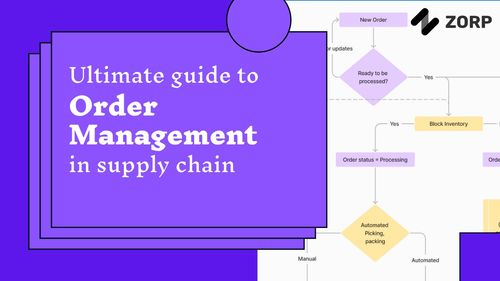Inventory audits are an essential aspect of running a successful small business. By definition, an inventory audit is a systematic process of examining, verifying, and validating a company's inventory records. The objective of an inventory audit is to ensure the accuracy of inventory records and identify any discrepancies.
Inventory audits are crucial for small businesses for several reasons. They help in maintaining accurate records, which leads to better inventory control and management. This, in turn, allows businesses to avoid issues such as stockouts, overstocking, and theft. Furthermore, accurate inventory records enable better financial reporting, planning, and decision-making.
There are several types of inventory audits that small businesses can employ:
Periodic inventory audits are conducted at regular intervals, typically at the end of a month or a quarter. These audits involve a complete physical count of inventory items and a comparison with recorded inventory levels.
Continuous inventory audits involve an ongoing process of counting and verifying inventory. Rather than counting the entire inventory at once, this method counts a small portion of the inventory daily or weekly.
ABC analysis is an inventory management technique that classifies inventory items based on their value and usage. Items are categorized into three groups: A (high-value items), B (medium-value items), and C (low-value items). This method helps prioritize items for inventory audits, ensuring that high-value items are audited more frequently.
Maintaining accurate and up-to-date documentation is crucial for a successful inventory audit. Ensure that all inventory transactions are recorded, including purchases, sales, and returns.
A robust inventory management system can streamline the audit process and help maintain accurate inventory records. Choose a system that fits your business needs and can integrate with other business software, such as accounting and point-of-sale systems.
Ensure that employees understand the importance of inventory audits and are trained in inventory management best practices. Proper training helps minimize human errors and ensures a smooth audit process.
Some common challenges faced by small businesses during inventory audits include:
Invest in inventory management software that automates the audit process, reduces manual labor, and minimizes human errors. Automated systems can help track inventory levels in real-time and generate audit reports with ease.
Cycle counting is a method that involves counting a portion of the inventory on a regular basis, rather than conducting a complete count at once. This method enables continuous monitoring of inventory levels and makes it easier to identify discrepancies.
Promote transparency within your business by involving employees in the audit process and keeping them informed about inventory management best practices. Open communication can help identify potential issues and improve overall inventory control.
Barcode scanners can significantly improve the efficiency and accuracy of inventory audits. They enable quick and accurate recording of inventory items during the counting process.
Inventory management software can automate the audit process and provide real-time inventory tracking. It can also generate audit reports, making it easier to identify and resolve discrepancies.
Regular inventory audits offer numerous benefits for small businesses, including:
Curious about supplier audits? Dive into our latest article to explore a detailed step-by-step process: Supplier Audit Guide. Uncover
Inventory audits are crucial for small businesses to maintain accurate inventory records, improve inventory control, and enhance financial reporting. By implementing best practices, overcoming challenges, and leveraging technology, small businesses can conduct effective inventory audits and enjoy the numerous benefits they offer.
What is the primary purpose of an inventory audit?
How often should small businesses conduct inventory audits?
What are the main types of inventory audits?
How can technology improve the inventory audit process?
What are some best practices for inventory audits?

Want to automate your inventory audit? Use the templates below to get started.


